The fourth quarter of the school year was about to start and we decided to move up some students who were academically progressing to a new grade level. I was delighted, excited, and yet a little bit nervous thinking that I would have a new student who is intelligent, gifted, and of course, well-loved by everyone both in school and in the shelter.
The first few weeks were filled with many things to adapt to, and I prayed that the new student would not be too overwhelmed by the change. Slowly, with the help of the responsive classroom approach we implemented, it supports the student to have an easy transition to a new environment.
In our school, we usually do our morning routines such as greetings, group sharing activities, reading of the morning message, and praying before we start our classes. One of the best memories of my journey with this boy was when he first greeted me with my name as his "new teacher" and hugged me. He even asked me about my morning. He was so excited!
The first day with him was not as smooth as I hoped for. There were a few bumps. This was the reason why we observed him in the classroom and modifications were made to suit the student's needs. He would always choose to be the first person in the line, but I explained that we have our rules on "taking turns," and he already had his chance. When I checked on him outside the classroom the next day, he sat on his spot and patiently waited for others to come. I realized that firmness and consistency are two powerful tools to achieve successful classroom management.
Another classroom scene that made my day was when we had our group sharing. Knowing that younger students are visual learners, I added fun pictures to make our sharing more interactive and to get their attention. As I flashed some images on the screen, I heard him laugh as if he was being tickled. It went on for a long time, and it certainly gave his classmates a stomachache laughing with him which caused a little bit of chaos in the class. So, I gave him 30 seconds, and he did stop. It was effective, then we began with our sharing. Since that moment, we've been working on calling the name of the next sharer. He was very observant and quick to realize that he needed to do the same to his classmates. To our surprise, he was able to call the next sharer without his classmate's help and use the phrase "Popcorn, student's name." Everyone in the class was shocked and happy, telling me, "Teacher Lyrah, have you heard him saying popcorn? He learns so fast!" Truly, success happens not just because of one person working as "the teacher," but it includes the students and peers who help one another and have a common goal to lift each other up.
Moreover, I have noticed that he is gifted and very clever. I had set aside things each morning and prepared different materials that he would need to stay focused in our class. These things will be given after each class activity. It was essential to remind him that he needed to finish his tasks then he could use what is prepared for him. Well, being firm with expectations and setting classroom boundaries are challenging at times; however, at CCHS we always do it with love and care.
He appeared to be adjusting into our classroom setting over the next few days. He also loves to participate when being asked. Though, he needed some reminders from time to time for him to stay on track. There was one instance in the middle of our discussion he stood up and asked for his dinosaur books. We stopped, and most of his classmates reminded him to ask permission every time he stands or wants to have something. He did go back to his seat and asked permission. But it was not time for him to read a book yet. So, he participated in our reading first and answered all the activities. Then he got the book for him to enjoy. Another strategy that was very effective to him was giving him a time frame before he could get his desired reading materials. These things didn't come easy, it requires hard work, patience, determination, cooperation, and above all, love. We made a lot of classroom modifications to cater for his needs and the rest of the class.
To be successful in the classroom, as teachers, we need to set clear classroom boundaries for our students.
As Colossians 3:23-24 says: "Whatever you do, work at it with all your heart, as working for the Lord, not for human masters, since you know that you will receive an inheritance from the Lord as a reward."
Who is the teacher?
Teacher Kristen is new to the CCHS team and we are so glad she is with us. Read on to find out what lesson she learned in her first few weeks on the job.

This is my first year ever teaching and I am so glad to be at Cebu Children of Hope School! The things they taught me in college have prepared me for the classroom, but only to a certain point. I've been struggling a bit with new routines and new students. I have tried many of the strategies I learned in college to help students focus in class but they haven't helped much.
I remember when I was a student like them. School was tiring for me as I had to sit most of the day and just listen to the teacher. Not very fun. When I started teaching this year I realized I was doing the same thing my past teachers did, things that made me, as a student, bored. In the first few weeks of school my students at CCHS taught me that I was too idealistic when it came to teaching. They taught me that I needed to cool down and start embracing their unique qualities.
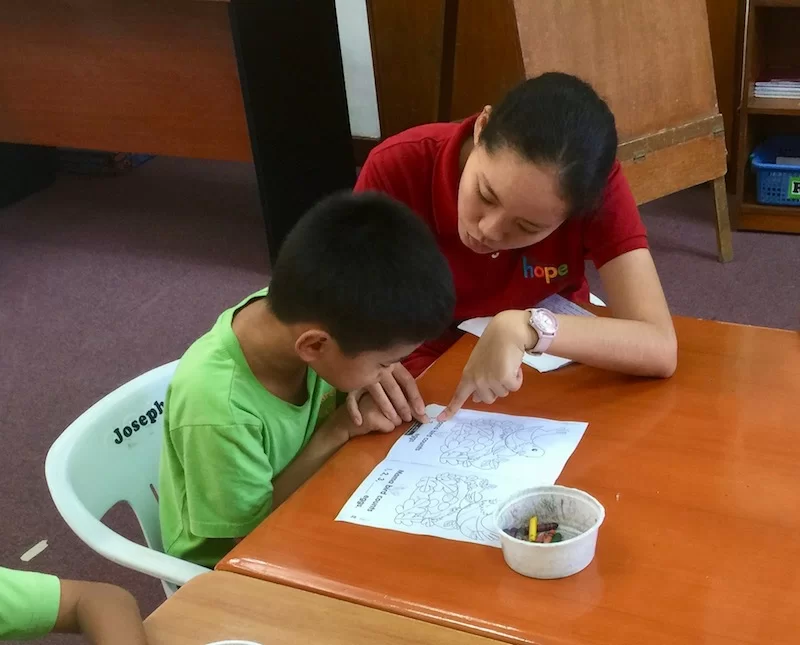
Once I realized this I made some changes in my classroom. I started to really listen to them and smile more. Very quickly I saw changes in their behavior. Now I am having fun teaching them and I love how they respond in class- showing excitement to learn!
Teachers are supposed to be the ones to teach kids. At CCHS I have learned that often kids can be great teachers.
Preschoolers and Plants
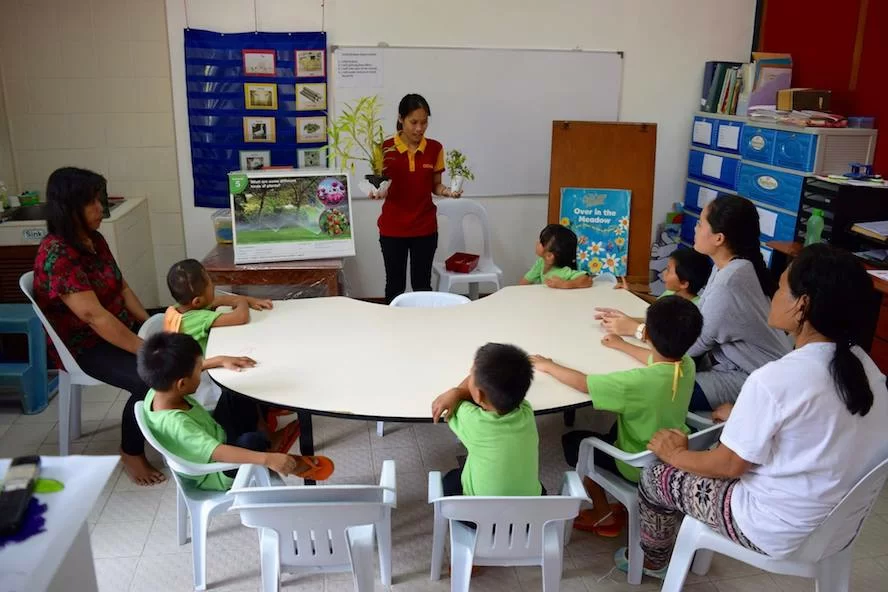
The preschoolers have been learning about the difference between living things and nonliving things. One example of a living thing, which we have been studying a lot about, is a plant. Every time I review with the children they say, "Sige ug balik" (It's a repeat). By the end of the unit the preschoolers were able to identify a plant, tree, shrub, vegetable, and grass. They also learned the parts of the plant (stem, flower, fruit, and roots) and where plants live (in desserts, farms, forests, and gardens).
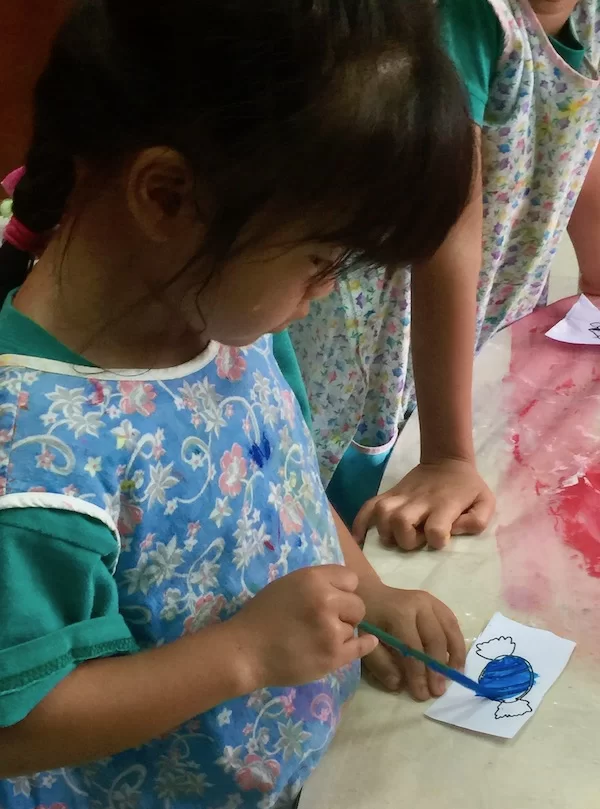 One of my favorite parts of the unit was taking the preschoolers outside for a mini field trip. Our school is surrounded by many different kinds of plants. On our "living things walk" we saw many banana trees, mango trees, and even an avocado tree. The preschoolers loved searching for living things and telling us what they found.
One of my favorite parts of the unit was taking the preschoolers outside for a mini field trip. Our school is surrounded by many different kinds of plants. On our "living things walk" we saw many banana trees, mango trees, and even an avocado tree. The preschoolers loved searching for living things and telling us what they found.
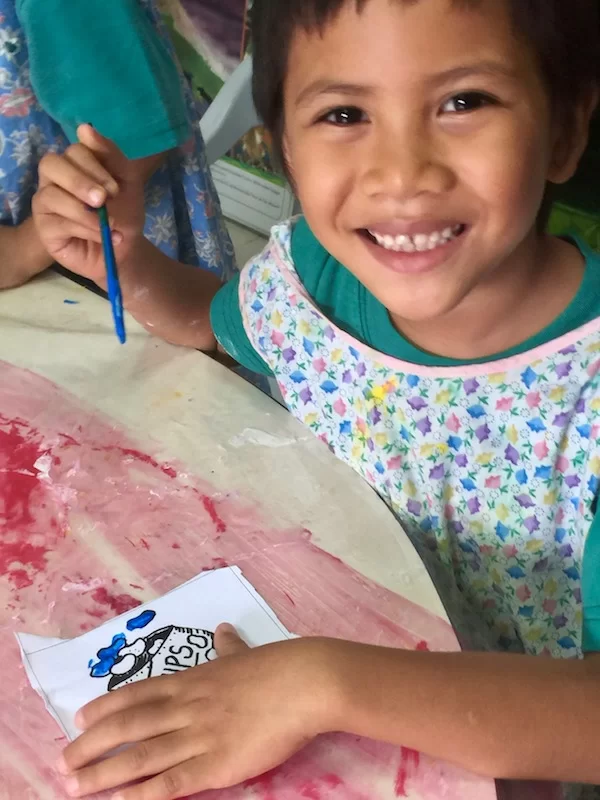
What a joy it was teaching the preschoolers about plants. We had a fun time learning together!
Creative Minds
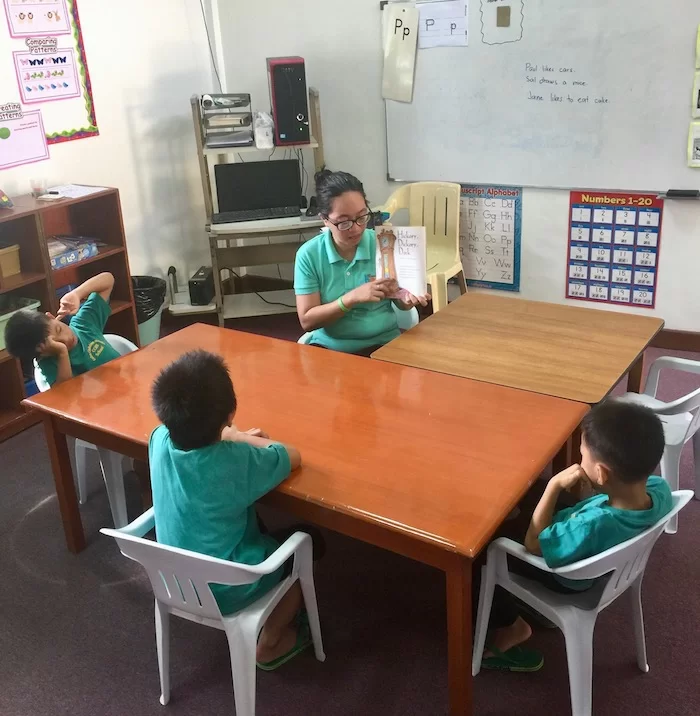
Having conversations with my students helps them learn to interact with their peers and teachers. It has a great impact on their learning and ability to listen as well.
I started this year with just three kids in my classroom. Three kids who love conversation and enjoy sharing their thoughts. One afternoon, during Civics class, one of my students shared with me about one of the CSC aunties (child care workers).
Student 1: Teacher, our auntie just had a baby! (saying it excitedly)
Me: Wow, that's great! Do you know if the baby is a boy or a girl?
Student 1: I don't know.
Student 2: Teacher, I know where the baby comes out.
Me: Where?
Student 2: Here! (referring to his bottom)
Student 1: No Teacher! I heard that a baby comes out from your belly button.
Student 3: Teacher, I know where babies come out of, here in our back.
Student 1: (reacting with a shocked face) No, the baby can't come out of there!
Me: Why?
Student 1: Because our back has a lot of bones. The baby will get hurt!
I love teaching at Cebu Children of Hope School for many reasons. One of them is the creative minds these little children have. You never know what ideas they will share.
Goodbye Up There!
Child welfare types refer to children who become very close while in care at a place like CSC as "institutional siblings." They are not siblings by blood but by affinity. Many of our children experience that kind of relationship while living at CSC. For the younger ones, they don't understand the difference. Such was the case with little Jacob. He had four very good buddies in the Eicher Home nursery. They spent lots of time together eating and playing. They looked out for each other, fought like true siblings and were known to tattle on each other on occasion.
Recently, Jacob was adopted by a great family from Europe. Shortly before Jacob's family came to get him, two of his pals got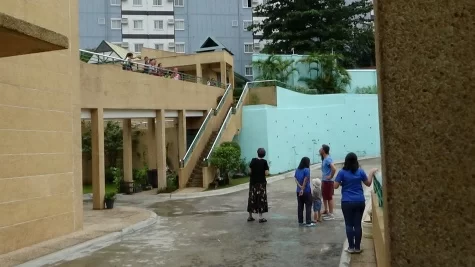 sick and had to be in isolation. Their ailment was very contagious. We worried that Jake, too, would get sick when he was supposed to travel but, thankfully, that didn't happen. But we felt bad that Jake wouldn't be able to say goodbye to his buddies. So Marlys came up with a plan. The infirmary caregivers brought the sick children outside to the bridge and Jake was able to look up, see them and say goodbye. The overhead kids shouted "bye-bye" and it was very touching. Certainly they didn't understand that he was going far away and they might never see him again. But they knew something big was up.
sick and had to be in isolation. Their ailment was very contagious. We worried that Jake, too, would get sick when he was supposed to travel but, thankfully, that didn't happen. But we felt bad that Jake wouldn't be able to say goodbye to his buddies. So Marlys came up with a plan. The infirmary caregivers brought the sick children outside to the bridge and Jake was able to look up, see them and say goodbye. The overhead kids shouted "bye-bye" and it was very touching. Certainly they didn't understand that he was going far away and they might never see him again. But they knew something big was up.
There is lots of love at CSC. Jacob experienced that from house parents, child care workers, staff and the other children. Now he will be feeling the love of a family. And a new sibling that will be his forever.
Science Can Be Funny
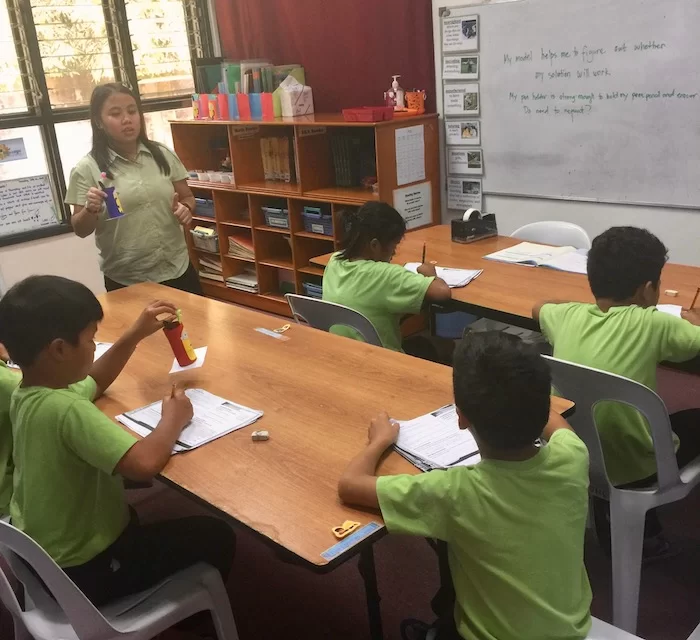
The official school year has begun at CSC! Teacher Lyrah, one of our dedicated and gifted teachers, shared about a science lesson she taught the other day:
Everyone was ready and calm as I stepped into the classroom. The students seemed very excited for the afternoon's discussion entitled "The Scientist and the Science tools."
I asked my students about the science tools and the brainstorming happened like this:
TEACHER: Can you still remember some of the science tools that you learned about last year in your class?
STUDENTS: Yes, Teacher Lyrah!
TEACHER: Tell me about one of those science tools.
STUDENT 1: Teacher, a hand lens.
STUDENT 2: How about a balance?
STUDENT 3: A measuring cup.
STUDENT 4: Thermometer!
TEACHER: WOW! You are really thinking about these tools. What are some others?
I called on one student who hadn't answered yet.
TEACHER: Okay, what is it?
He was very hesitant about his tool and just smiled again.
STUDENT 5: Teacher, how about a telecopter?
He was laughing so hard because he mentioned the tool in a different way. Everyone in the class was puzzled about his answer.
STUDENT 1: What do you mean a telecopter?
Student 5 laughed so hard and kept on saying the word telecopter.
STUDENT 5: (laughing) Teacher, what I mean is a telescope not a telecopter!
TEACHER: A telecopter? That word is a combination of a telescope and a helicopter. Isn't it?
He laughed and said: " Yes, teacher because we use a telescope to see the stars and other flying objects like helicopters."
Then I remembered the time last year when I showed them a telescope and we talked about how it worked.
Everyone in the classroom was amazed with his great new word invention!






